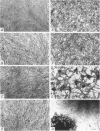Abstract
A selective method was devised for the isolation of “revertants” from polyoma-transformed sublines derived from BHK21/13 Syrian hamster fibroblasts. A hybrid, polyploid subline was obtained by growing together, in mixed culture in the presence of aminopterin, two variant BHK21/13 sublines lacking either inosinic acid pyrophosphorylase or thymidine kinase. Whereas these variant sublines were resistant to 6-thioguanine or to 5-bromodeoxyuridine, the hybrid had regained sensitivity to both analogues. By plating a polyoma-transformed subline derived from this hybrid in the presence of 6-thioguanine, resistant clones were obtained with a frequency of about 10−4. All of these surviving clones had a reduced chromosome complement and some of them had regained a normal phenotype.
Full text
PDF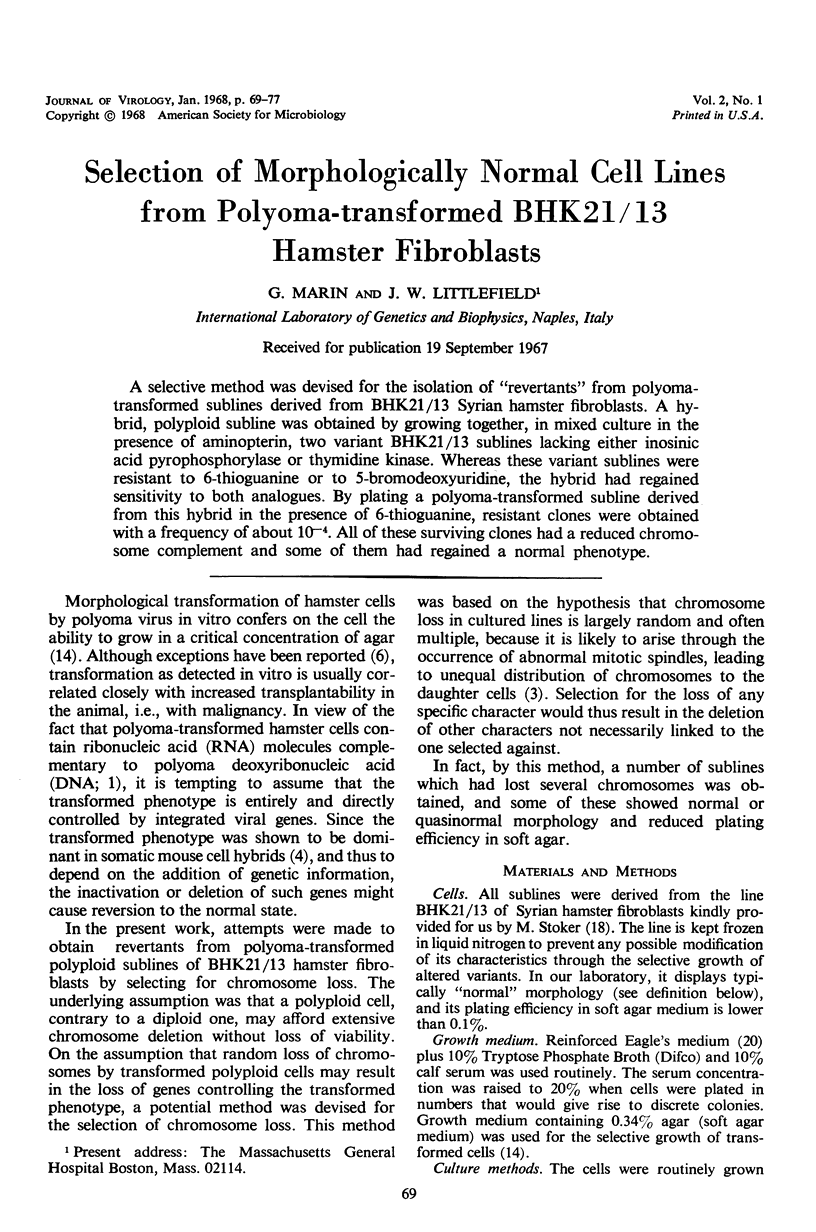
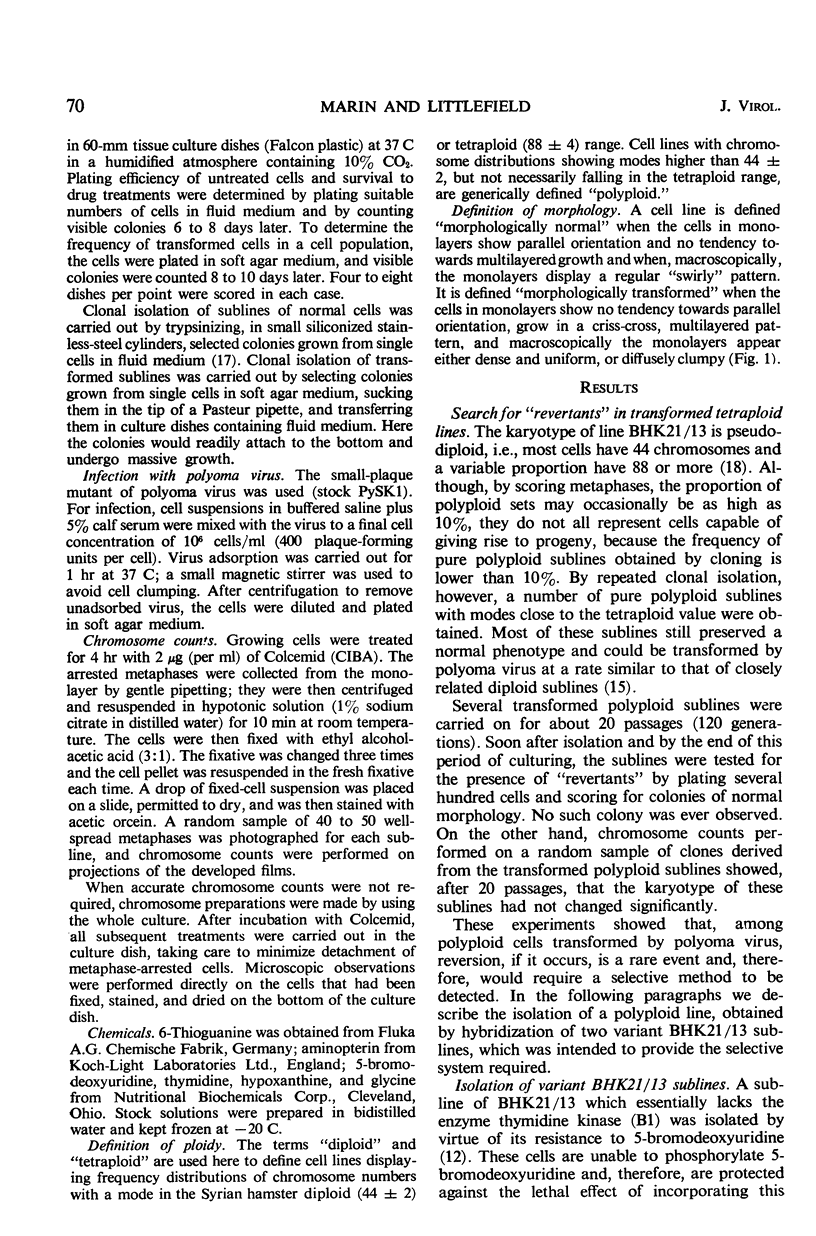
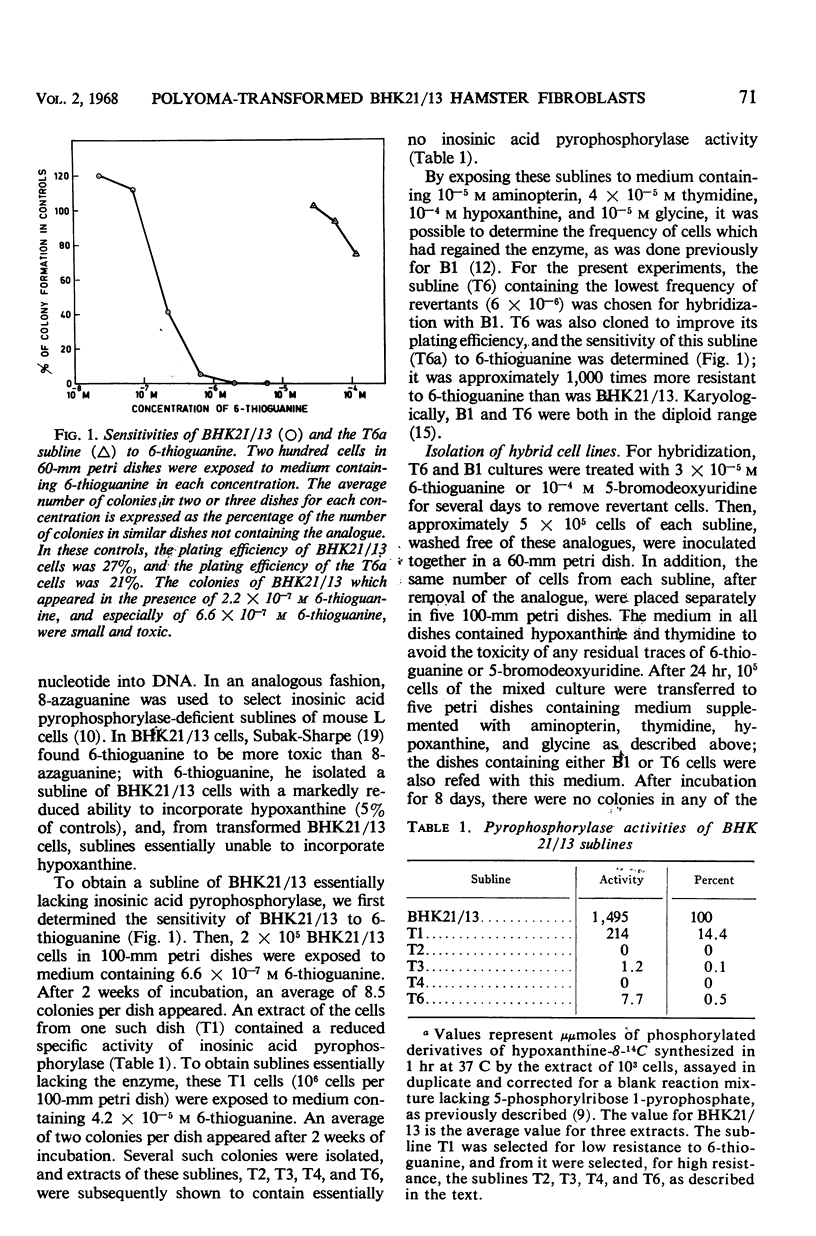
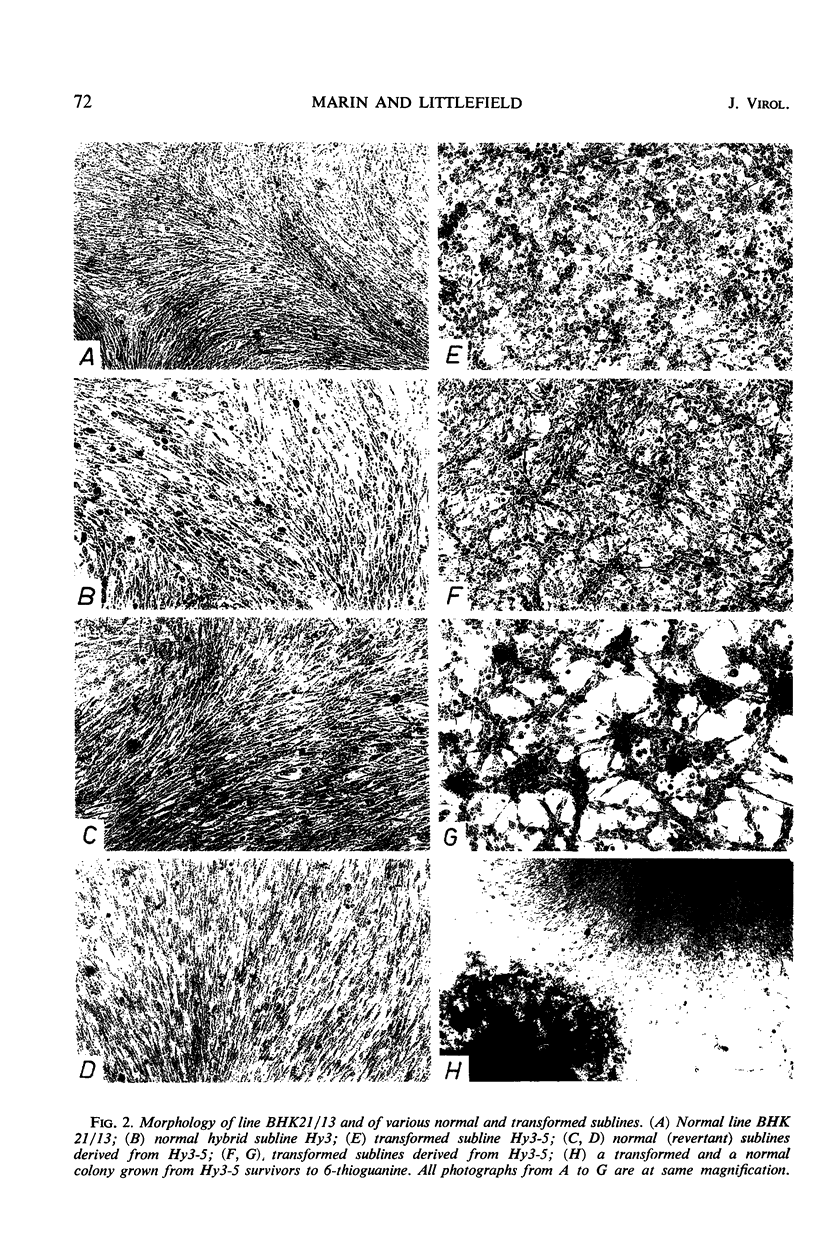
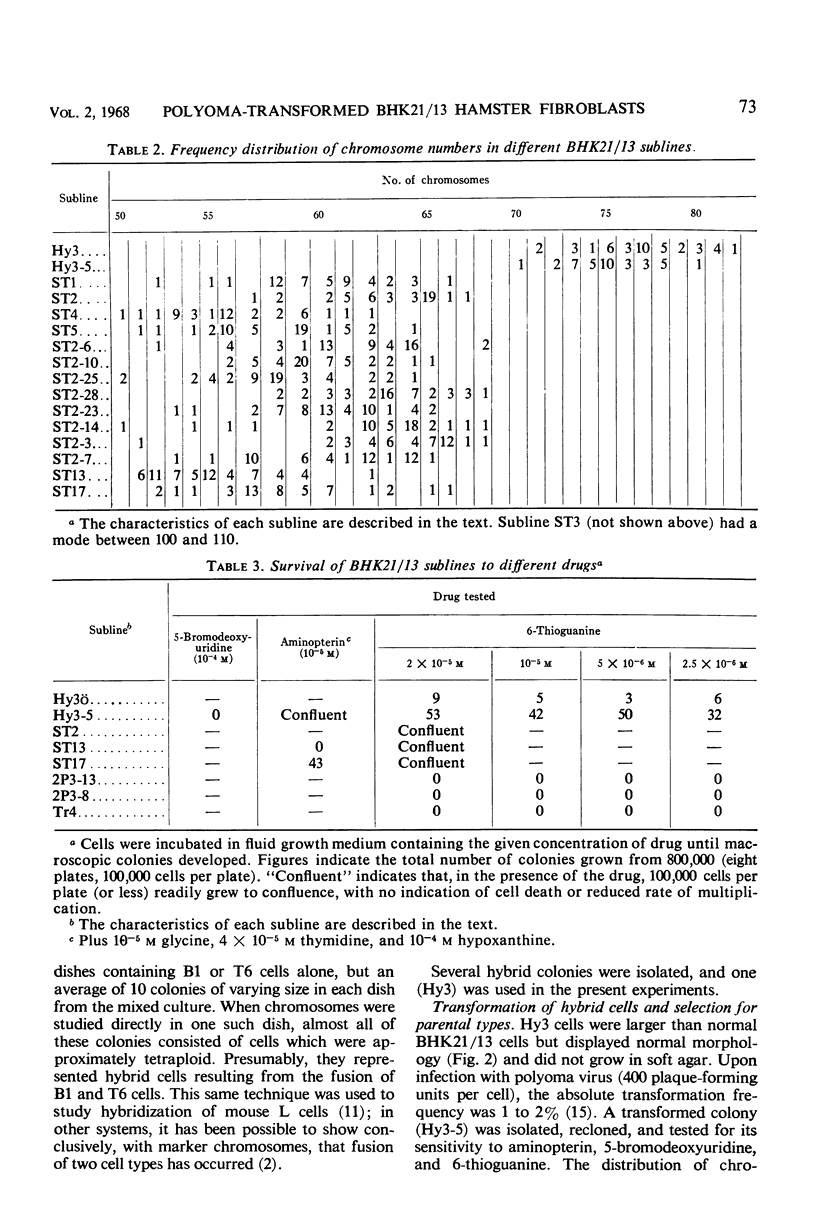
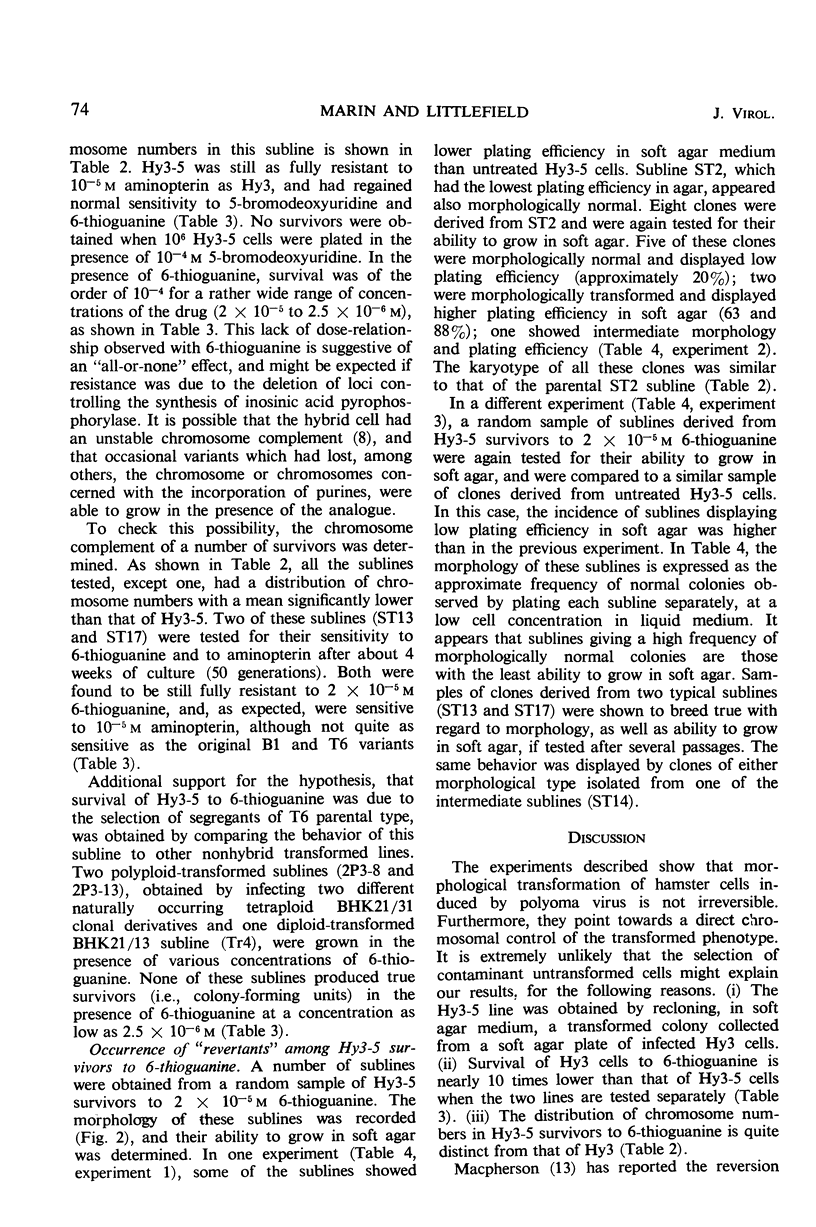
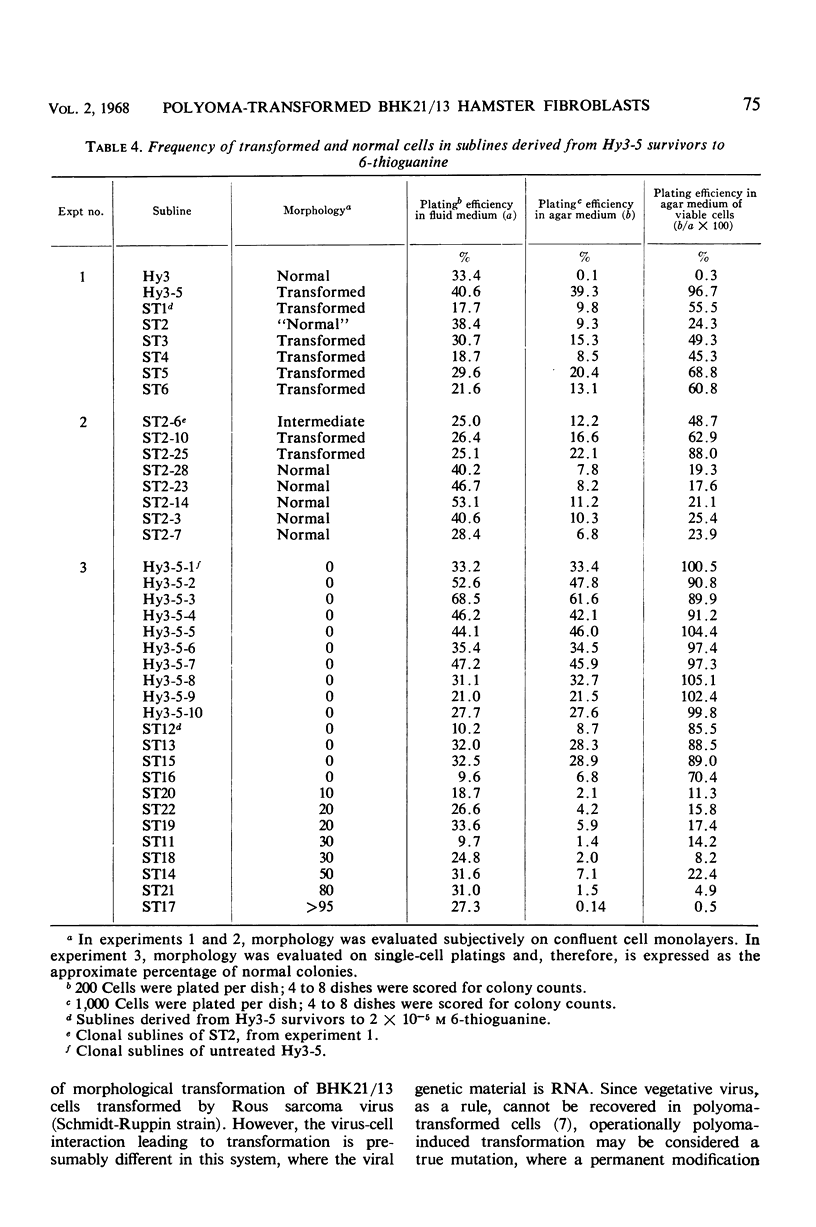
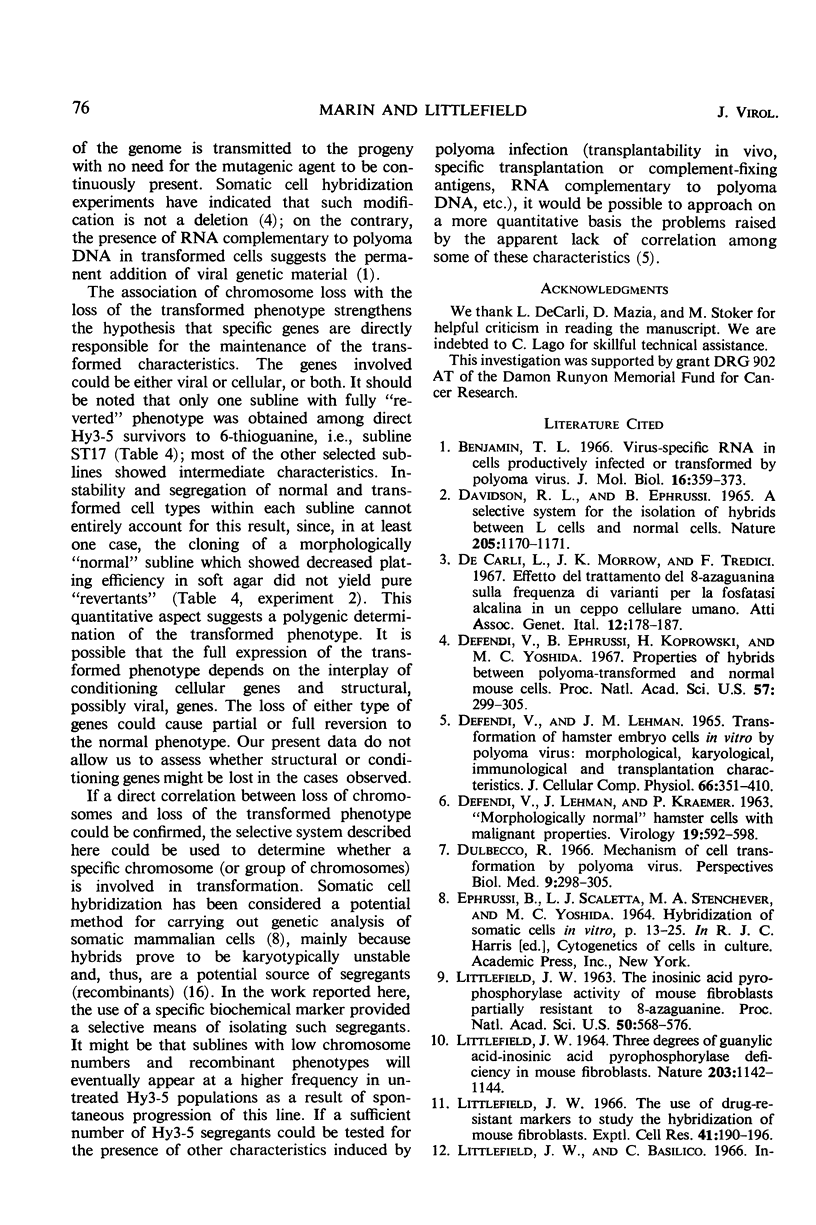
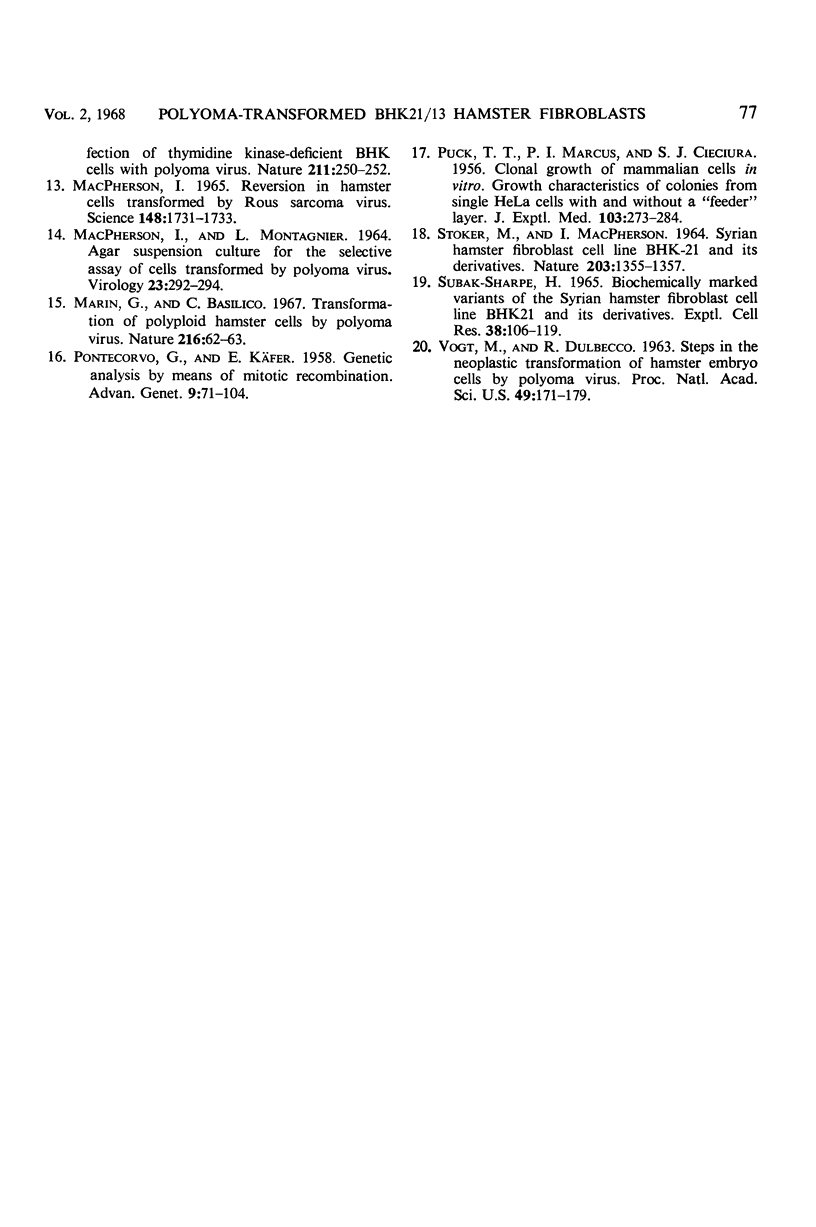
Images in this article
Selected References
These references are in PubMed. This may not be the complete list of references from this article.
- Benjamin T. L. Virus-specific RNA in cells productively infected or transformed by polyoma virus. J Mol Biol. 1966 Apr;16(2):359–373. doi: 10.1016/s0022-2836(66)80179-1. [DOI] [PubMed] [Google Scholar]
- DEFENDI V., LEHMAN J., KRAEMER P. "Morphologically normal" hamster cells with malignant properties. Virology. 1963 Apr;19:592–598. doi: 10.1016/0042-6822(63)90058-8. [DOI] [PubMed] [Google Scholar]
- Defendi V., Ephrussi B., Koprowski H., Yoshida M. C. Properties of hybrids between polyoma-transformed and normal mouse cells. Proc Natl Acad Sci U S A. 1967 Feb;57(2):299–305. doi: 10.1073/pnas.57.2.299. [DOI] [PMC free article] [PubMed] [Google Scholar]
- Defendi V., Lehman J. M. Transformation of hamster embryo cells in vitro by polyoma virus: morphological, karyological, immunological and transplantation characteristics. J Cell Physiol. 1965 Dec;66(3):351–409. doi: 10.1002/jcp.1030660313. [DOI] [PubMed] [Google Scholar]
- Dulbecco R. Mechanism of cell transformation by polyoma virus. Perspect Biol Med. 1966 Winter;9(2):298–305. doi: 10.1353/pbm.1966.0008. [DOI] [PubMed] [Google Scholar]
- LITTLEFIELD J. W. THE INOSINIC ACID PYROPHOSPHORYLASE ACTIVITY OF MOUSE FIBROBLASTS PARTIALLY RESISTANT TO 8-AZAGUANINE. Proc Natl Acad Sci U S A. 1963 Sep;50:568–573. doi: 10.1073/pnas.50.3.568. [DOI] [PMC free article] [PubMed] [Google Scholar]
- Littlefield J. W. The use of drug-resistant markers to study the hybridization of mouse fibroblasts. Exp Cell Res. 1966 Jan;41(1):190–196. doi: 10.1016/0014-4827(66)90558-1. [DOI] [PubMed] [Google Scholar]
- MACPHERSON I., MONTAGNIER L. AGAR SUSPENSION CULTURE FOR THE SELECTIVE ASSAY OF CELLS TRANSFORMED BY POLYOMA VIRUS. Virology. 1964 Jun;23:291–294. doi: 10.1016/0042-6822(64)90301-0. [DOI] [PubMed] [Google Scholar]
- Macpherson I. Reversion in Hamster Cells Transformed by Rous Sarcoma Virus. Science. 1965 Jun 25;148(3678):1731–1733. doi: 10.1126/science.148.3678.1731. [DOI] [PubMed] [Google Scholar]
- Marin G., Basilico C. Transformation of polyploid hamster cells by polyoma virus. Nature. 1967 Oct 7;216(5110):62–63. doi: 10.1038/216062a0. [DOI] [PubMed] [Google Scholar]
- PONTECORVO G., KAFER E. Genetic analysis based on mitotic recombination. Adv Genet. 1958;9:71–104. [PubMed] [Google Scholar]
- PUCK T. T., MARCUS P. I., CIECIURA S. J. Clonal growth of mammalian cells in vitro; growth characteristics of colonies from single HeLa cells with and without a feeder layer. J Exp Med. 1956 Feb 1;103(2):273–283. doi: 10.1084/jem.103.2.273. [DOI] [PMC free article] [PubMed] [Google Scholar]
- STOKER M., MACPHERSON I. SYRIAN HAMSTER FIBROBLAST CELL LINE BHK21 AND ITS DERIVATIVES. Nature. 1964 Sep 26;203:1355–1357. doi: 10.1038/2031355a0. [DOI] [PubMed] [Google Scholar]
- SUBAK-SHARPE H. BIOCHEMICALLY MARKED VARIANTS OF THE SYRIAN HAMSTER FIBROBLAST CELL LINE BHK21 AND ITS DERIVATIVES. Exp Cell Res. 1965 Apr;38:106–119. doi: 10.1016/0014-4827(65)90432-5. [DOI] [PubMed] [Google Scholar]
- VOGT M., DULBECCO R. Steps in the neoplastic transformation of hamster embryo cells by polyoma virus. Proc Natl Acad Sci U S A. 1963 Feb 15;49:171–179. doi: 10.1073/pnas.49.2.171. [DOI] [PMC free article] [PubMed] [Google Scholar]



